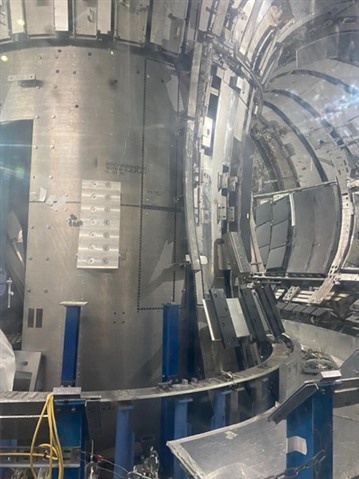Joint European Torus (JET) tokamak achieved a world record for energy output in its final runs at the end of last year (https://www.newscientist.com/article/2415909-uk-nuclear-fusion-reactor-sets-new-world-record-for-energy-output/). Since it started operating in 1983, JET has contributed to major advances in fusion science and engineering but also to the field of robotics.
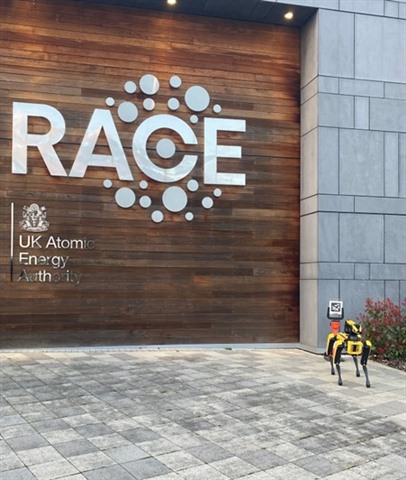
RACE is the UK Atomic Energy Authority’s (UKAEA) centre for Remote Applications in Challenging Environments. The centre has been supporting the operation of JET, developing robots for routine maintenance, replacing components as part of upgrades to the machine, and now the safe decommissioning of the device.
On March 6, 2024, the IET Robotic and Mechatronics Technical and Professional Network arranged a tour of RACE and of the JET facility. 21 members heard Chris Warrick, University Liaison Manager at UKAEA, talk about the process of nuclear fusion inside a tokamak, the history of JET and the next steps for fusion power. This was followed by a talk from Rob Skilton, UKAEA Robotics Fellow and new member of the TPN Executive Committee (welcome Rob!), covering the work of RACE. Highlights included:
- A discussion of challenges involved in creating extremely sensitive haptic teleoperated manipulator systems that can operate inside the fusion experiment.
- The development of a VR centre for operator training
- An insight into how you build robots that are resilient to high heat and extreme environments.
- A look at some of the robots that perform routine inspection of both the inside and outside of the vessel, performing photo surveys, thermal imaging surveys, and geometry surveys using lidar. This is complimented by research into efficient 3D reconstruction over potentially limited bandwidth.
- A look at some of the robots that undertake the complicated job of replacing components, which often involves a lot of cutting and rewelding pipes to a high standard – RACE is researching how to speed this up e.g. using laser cutters and welders and advanced methods of inspecting pipes.
- Research into robotic additive manufacturing for repair in-situ to negate having to bring the component out of the vessel for repair.
The evening also included a visit to the RACE work hall where we were shown a number of active research projects including the TARM (Telescopic Articulated Remote Manipulator) – a huge remote handling system formerly used to perform vessel maintenance on JET (https://race.ukaea.uk/tarm-the-key-facts-and-figures/), and Telbot (motor driven) and Dexter (metal tendons) - 2 remote operated manipulators used to investigate the best way of doing remote operations in challenging environments.
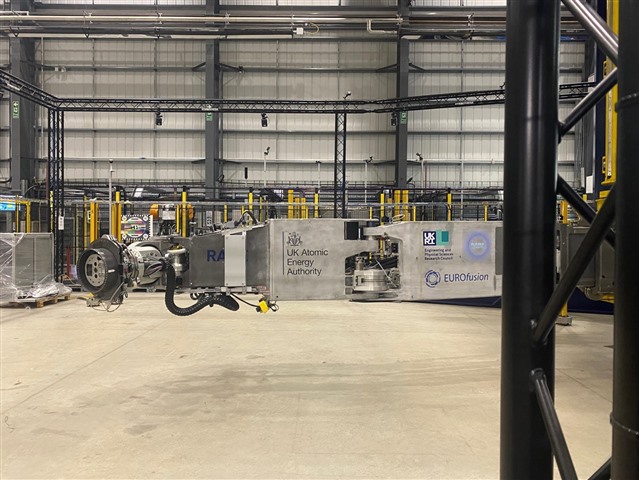
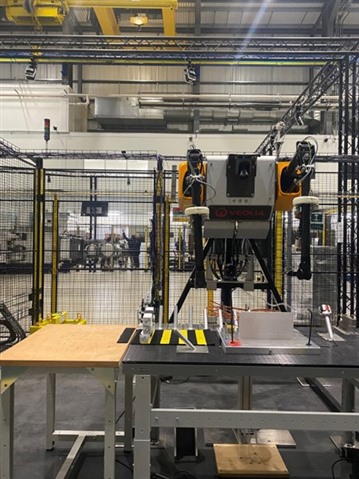
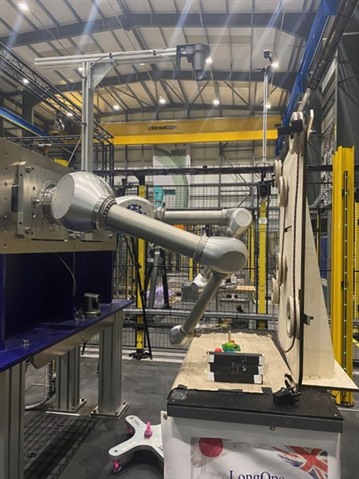
TARM TARM Telbot
Although JET has now stopped running, robotics will still play a big part in its decommissioning. Current work centres around retrieving samples from inside the vessel for testing, supporting the material science involved in fusion energy. Later work will include robots stripping out components from inside the vessel, before then decommissioning the vessel itself. The makes for a great opportunity to learn about decommissioning future fusion power plants, and how to deal with the waste, adding value to fusion science and engineering in the future.
Rob also discussed the wider impact of the work of RACE and how they are applying the lessons learned over 40 years of supporting JET operations:
The team are part of the consortium making up Sellafield’s new Centre of Expertise in Robotics and Artificial Intelligence, looking at the robotics technologies that can be used to address the challenges in safely inspecting and decommissioning the Sellafield site in Cumbria.
The team are also looking at whether there are lessons from JET that can be applied to help de-risk clean-up operations at Fukushima.
There are several ongoing projects focussing on the feasibility of maintaining ITER systems using commercially available equipment. ITER (International Tokamak Experimental Reactor) is an international power plant scale fusion project planning to operate at full power in the early 2030s
The evening was a great success, and I would like to thank Chris, Rob and the other members of staff who stayed late on a Wednesday evening to share their work with us.
Two robots cooperating to 3-D print repairs
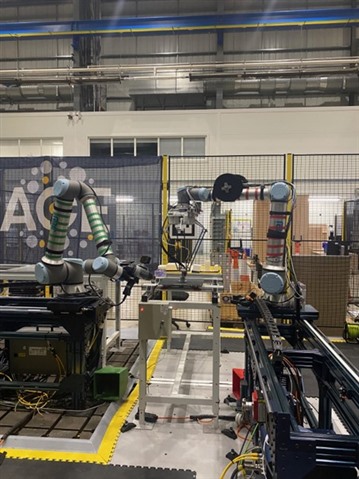
Inside the Torus Hall
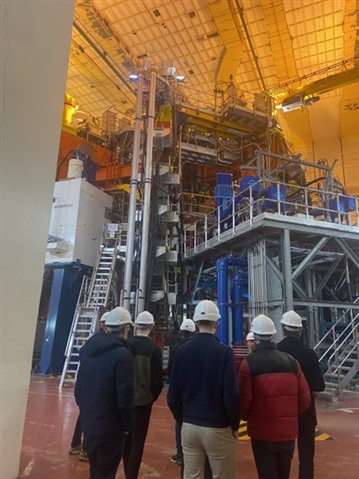
A scale model of the vessel used for practicing robotic operations
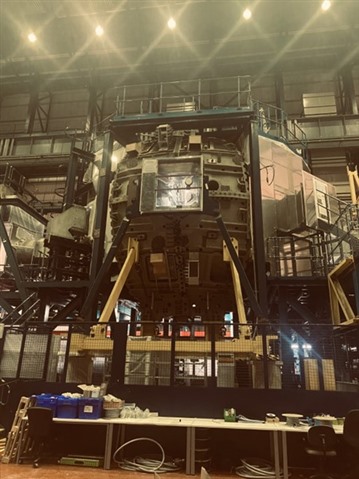
A view of the inside of the scale vessel
